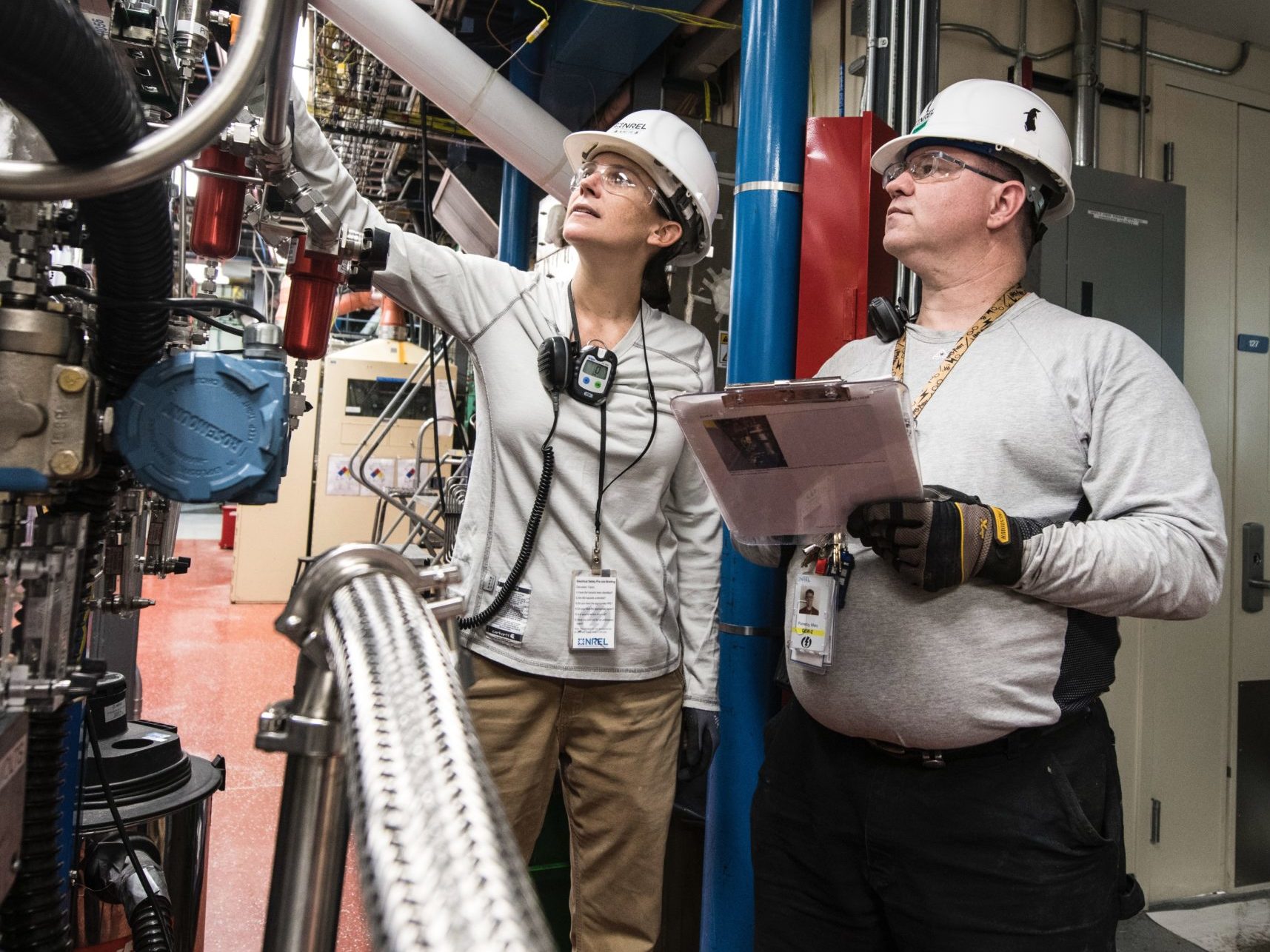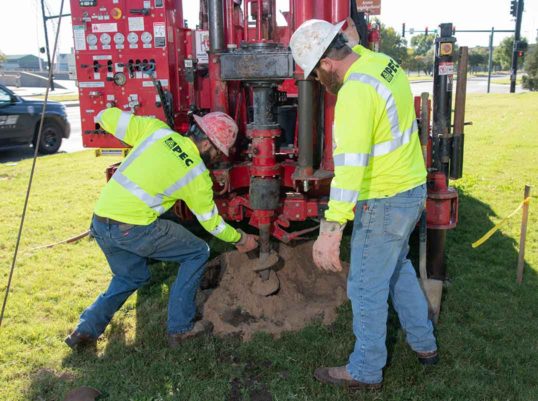A Complete Overview to Coming To Be a Successful Geotech Engineer
Wiki Article
Comprehending the Comprehensive Function of Geotechnical Designers in Ground Examination and Dirt Evaluation for Construction Jobs
Geotechnical designers are important to the success of construction projects, supplying crucial insights with detailed ground examinations and soil analysis. Their experience in analyzing soil actions and utilizing advanced screening methods notifies important decisions that promote structural honesty and security.Role of Geotechnical Engineers
The essential function of geotechnical engineers in building projects can not be overemphasized, as they give necessary insights right into soil habits and website conditions. These professionals are tasked with evaluating the viability of the ground for different sorts of structures, making sure safety and stability throughout the construction procedure. Their experience incorporates a variety of activities, consisting of site characterization, soil sampling, and lab screening, which are crucial for determining the mechanical and physical homes of the soil.Geotechnical engineers utilize their searchings for to establish foundational styles that accommodate load-bearing demands and alleviate risks associated with dirt liquefaction, settlement, and slope stability. They play a vital duty in identifying prospective hazards, such as groundwater fluctuations and contamination, which can significantly impact project stability. They work together with designers, civil designers, and service providers to guarantee that geotechnical factors to consider are incorporated into the overall layout and building and construction stages.
Ground Investigation Methods
Ground examination techniques develop the backbone of geotechnical engineering, making it possible for engineers to acquire an extensive understanding of subsurface problems. These techniques are crucial for analyzing soil buildings, figuring out groundwater degrees, and recognizing prospective geological dangers.Usual techniques include borehole drilling, which enables the extraction of dirt samples at various depths, providing essential data for evaluation. Furthermore, sitting screening methods, such as Typical Infiltration Examinations (SPT) and Cone Infiltration Tests (CPT), are used to evaluate soil strength and density directly in the ground.
Geophysical techniques additionally play a significant function in ground examinations. Techniques such as seismic studies and electrical resistivity tomography aid evaluate subsurface qualities without substantial excavation. geo tech engineering. These non-invasive methods are especially beneficial in large or sensitive locations where disruption should be minimized
Moreover, exploratory trenches can be excavated to visually examine soil layers and determine any anomalies. Each of these strategies contributes unique understandings, allowing geotechnical engineers to create exact site analyses and educate layout decisions. In recap, a combination of these ground examination techniques is essential for successful building jobs, ensuring security and architectural stability.
Dirt Evaluation Methods
Dirt evaluation methods are important for recognizing the chemical and physical properties of dirt, which directly affect the layout and building of structures and various other frameworks. Different methods are utilized to analyze soil features, making certain that geotechnical designers acquire exact data for educated decision-making.One typically used approach is grain size evaluation, which identifies the distribution of particle sizes within a soil sample. This is essential for categorizing dirt kinds and predicting their actions under lots. An additional necessary method is Atterberg limitations screening, which reviews the plasticity and wetness content of fine-grained dirts, supplying insights into their design residential or commercial properties.

Field tests, such as Standard Infiltration Tests (SPT) and Cone Penetration Tests (CPT), deal valuable in-situ data regarding dirt stamina and stratification. Jointly, these soil analysis approaches develop the structure of geotechnical investigation, enabling designers to design safe and reliable structures customized to the particular conditions of the website.
Risk Mitigation Strategies
Implementing reliable risk mitigation techniques is crucial for geotechnical engineers to address potential difficulties in construction projects. These techniques are critical in determining, examining, and managing risks related to soil problems, website security, and groundwater changes, which can negatively influence task end results.One main technique includes conducting detailed site examinations that utilize sophisticated geophysical strategies and extensive dirt sampling. By acquiring precise data on subsurface conditions, engineers can make enlightened decisions on layout and building techniques. In addition, utilizing predictive modeling tools enables the simulation of different circumstances, allowing designers to predict possible troubles and implement precautionary actions.
Additionally, establishing clear communication networks among task stakeholders promotes a collaborative approach to take the chance of monitoring. Routine updates and assessments make certain that all parties are mindful of the evolving website problems and can adjust their approaches appropriately.

Influence On Building And Construction Jobs
The performance of danger mitigation methods straight influences the general success of construction tasks. Geotechnical designers play a crucial duty in this domain, as their know-how in ground investigation and soil analysis educates vital decisions throughout the construction procedure. By precisely examining dirt conditions and determining prospective threats, these experts make it possible for job groups to devise effective remedies that lower dangers related to ground instability, water infiltration, and other geotechnical challenges.The impact of extensive geotechnical evaluation appears in numerous elements of construction tasks, consisting of cost administration, task timelines, and architectural stability. Early recognition of concerns allows for timely interventions, minimizing expensive hold-ups and budget plan overruns. Furthermore, a comprehensive understanding of site conditions boosts the layout and engineering procedure, making sure that frameworks are developed to withstand ecological stress and possible natural disasters.
Inevitably, the contributions of geotechnical engineers are integral to the effective implementation of building and construction jobs. Their work not just promotes safety and security and conformity with regulations yet additionally enhances the long-term sustainability of frameworks, guaranteeing that they carry out effectively throughout their desired life expectancy. The collaboration in between geotechnical groups and various other stakeholders is important for accomplishing optimum outcomes in construction undertakings.
Final Thought
Finally, geotechnical engineers carry out an important feature in building and construction jobs through comprehensive ground investigations and soil analyses. Their knowledge in analyzing soil actions, utilizing different investigation methods, and carrying out threat mitigation methods considerably adds to the architectural stability and safety of constructed atmospheres. By working together with multidisciplinary teams, these professionals improve job efficiency and make certain conformity with safety and security criteria, ultimately leading to effective building and construction results and minimized potential risks.Geotechnical engineers are important to the success of building and construction jobs, giving essential understandings with comprehensive ground examinations and soil evaluation.The pivotal function of geotechnical engineers in construction projects can not be overemphasized, as they provide vital insights right into dirt behavior and site conditions. Their knowledge encompasses a vast range of activities, consisting of site characterization, dirt tasting, and research laboratory testing, which are vital for identifying the mechanical and physical homes of the dirt.
By accurately analyzing soil problems and identifying potential risks, these specialists enable task teams to develop reliable remedies that decrease risks connected with ground instability, water seepage, and other geotechnical difficulties.
In conclusion, geotechnical engineers carry out a critical function in building and construction tasks with detailed ground examinations and soil analyses.
Report this wiki page